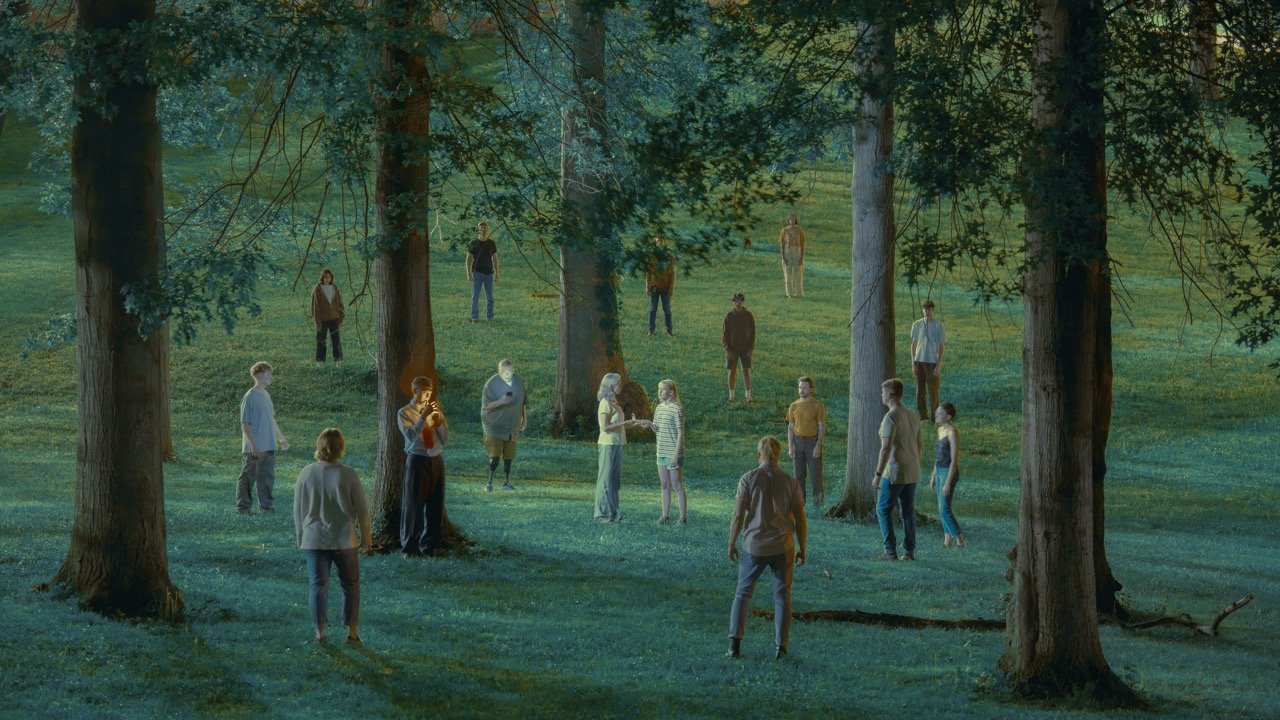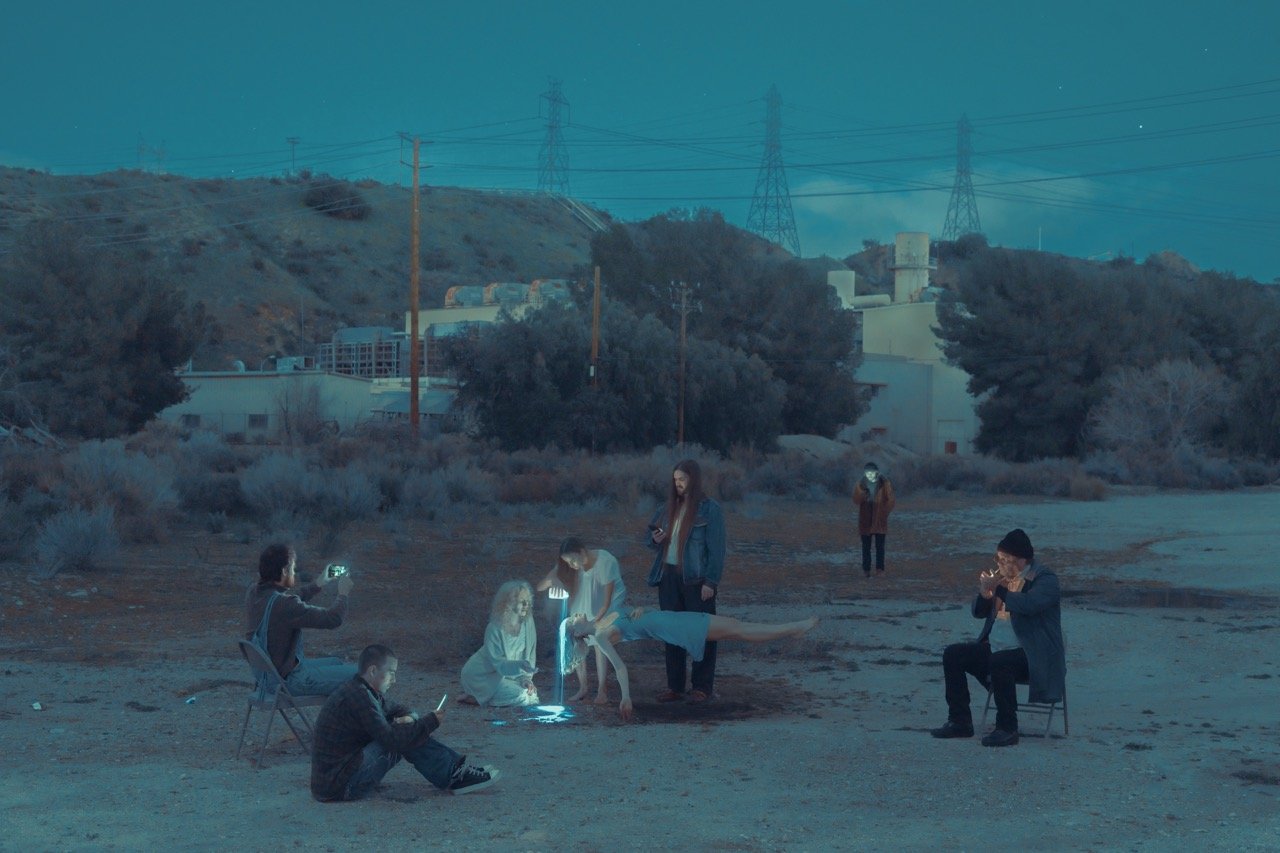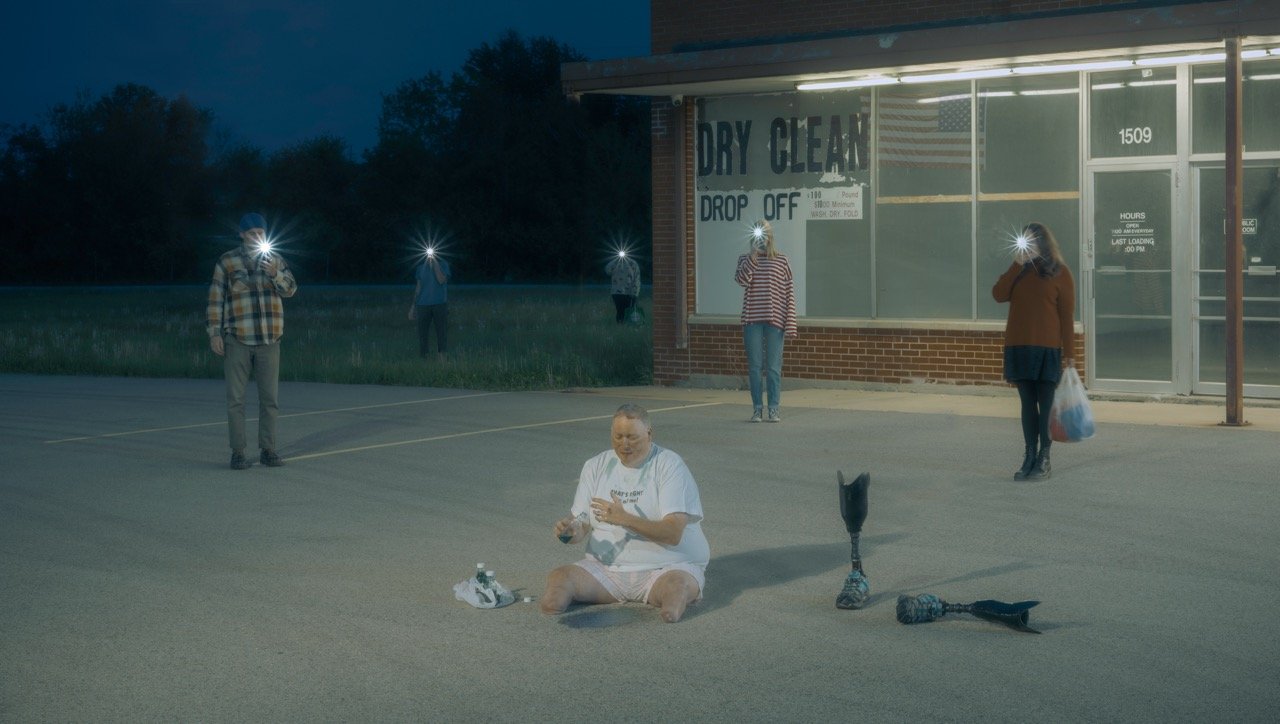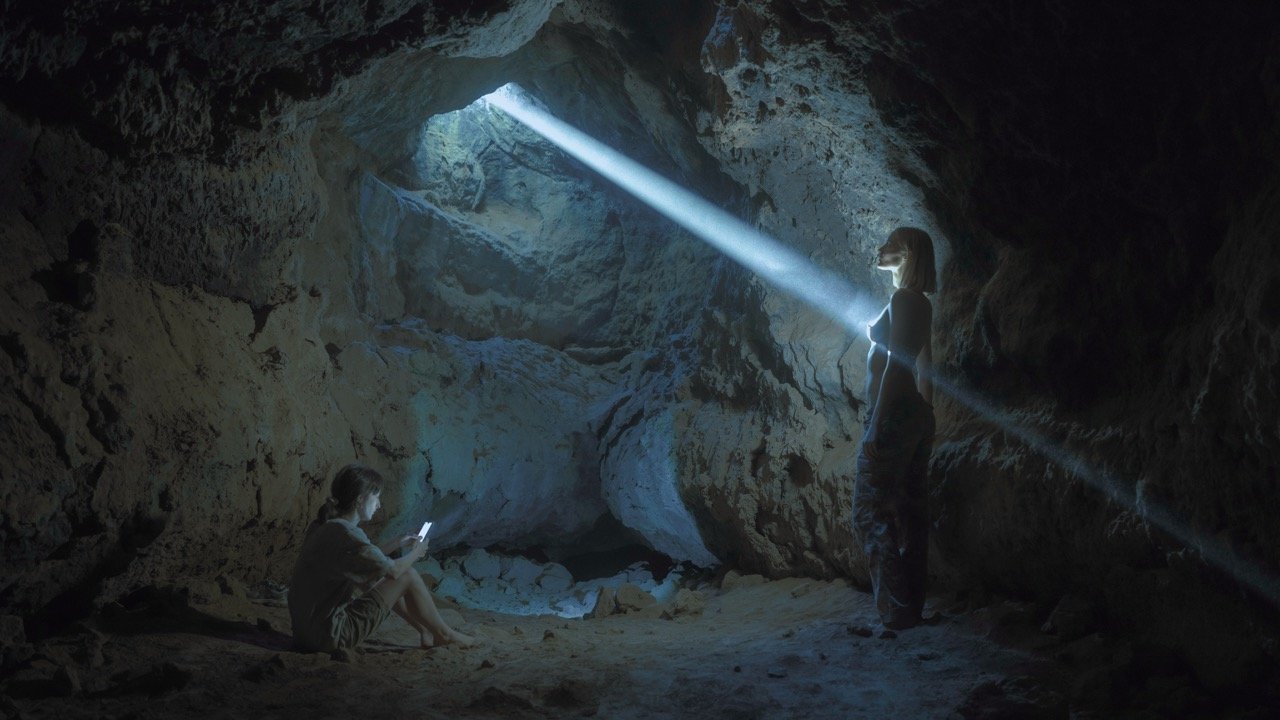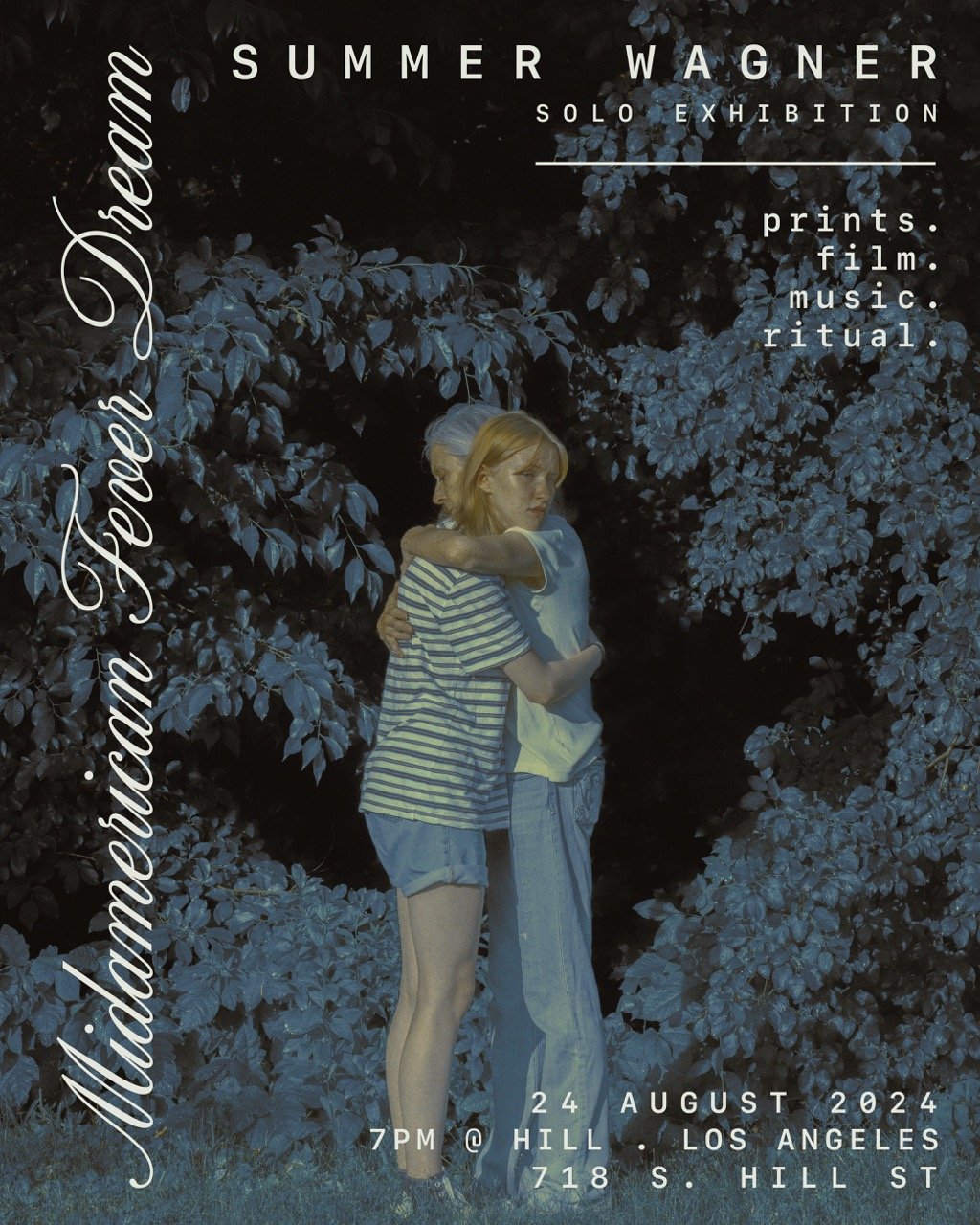In A Dream With Summer Wagner
Summer Wagner’s photography work is the kind of stuff that really makes you stop and think.
Think about your place in the world, what you’re doing for your job, how you treat other people and also how she managed to bloody do it? Full of so much thought and wonder and intrigue. Hailing from the rust belt region of the Midwest, United States, Summer blurs the line between fantasy and reality, allowing the viewer to reflect on the everyday human experience in both confronting and appreciative ways. It’s a balance that so many great photographers possess that allow them to be great photographers. We chatted to Summer ahead of her first solo, physical print exhibition Midamerican Fever Dream happening later this week in LA.
To start off with, I’d love to know about your home in the MidWest and how that influences your work, if it does at all?
It certainly does. My story is a big saga of moving from the MidWest to the West Coast. I grew up in Illinois and moved in the 2008 financial crisis. Dad loses his job. Classic story. My whole family moved to Southern California. OC, to be specific. And so I spent the next ten years in Orange County, which is a very different cultural landscape. I went to college and studied film production. Long, long, long story short, I ended up needing to take some time off from school, and I moved back to Illinois, lived with my parents, and then Covid happened. I ended up staying there for the next five years. So altogether, five years of being back as an adult in a place where I spent my childhood. So the kind of poetry of that timing was where I was able to really discover myself, you know, my child self. And a part of discovering my style was coming out of that kind of heat of being in a big coastal city and moving to a much slower paced part of the country where there's just different values. People aren't as hungry for a certain type of success or clout. Instead it's a spacious place to be able to experience creatively. And so that's one side of it. The other side of it is that the Midwest itself is just beautiful, really inspiring natural landscapes and ecology. Experiencing the seasons for the first time really taught me a lot about creativity and seasons of life that are happening emotionally and internally. And then a big part of my work, especially in this last couple of years, has been looking at the the Rust Belt in particular, which is the section of the United States where an industry that had previously been there for decades which supported a lot of people and working class families just basically picked up and left across the seas, leaving a strip of abandoned industrial buildings and cities like Detroit, Rockville, Illinois, where I'm from. So that has thematically found its way into my work too. So wow, yeah, long winded answer.
Very interesting. My next question was about how you developed your style but that seems to have answered that. On that change of pace that you mentioned - your work explores the reality of chasing the capitalist dream, scenes of people stuck at their desk but juxtaposed against this kind of fantasy lighting - how do you create that balance?
I try to create morally ambiguous scenes because I feel like that's the reality of how we live our lives. There's something really beautiful about the blue light that comes off of a screen to me, especially in a dark room or in a dark setting, that blue light is a little echo giving you information through an image or video or whatever. It is a dream-like contrast that we actually experience in our everyday lives. I aim to capture and create a scene that is potentially very sad or depressing while also portraying the beauty within that lived experience. It is not just about making a commentary on how sad and depressing everything is, but more being open to the possibility that even experiences that have an air of longing or sadness are also a very beautiful part of the human experience. I also like to create scenes that have a feeling of memory to them. I feel like we as humans are able to look back on our hardest memories as something that formed us and could be something that we look back on with nostalgia, even if it was a very difficult time.
I’ve never thought to frame the blue light in a positive way but you’re right. How long did it take to refine your colour grading and lighting?
I really started taking pictures in 2020. I have a background in filmmaking and that really helped because you learn all the rules of thirds and lighting. I didn’t start grading until 2021 and then it was obsessive - going out to shoot all the time and then editing for hours and hours and hours. So I honed in on grading within about a year. The style of what we see today was developed slowly, adding more layers or production and lighting. It took several years to get to this point.
Would you say that you're a very spiritual person? Because I think some people would look at your work and take away a lot of spiritual, sort of fairy, kind of psychedelic meaning from it.
Yes, I am a spiritual person. I do have a practice that I would consider to be spiritual. It doesn't necessarily adhere to a specific type of spirituality or a specific set of rules. It's more of a world view, maybe akin to, I don't know what you'd call it, a modern animism, where you kind of see the life in all things, where even objects have a kind of psychedelic and beautiful experience of perception.
Now that you’ve developed that style - what would a photo look like that you just shoot for yourself? Are you constantly seeking out scenes in a working sense?
Ever since I moved back to LA, I think it’s been a slow process of getting back into holding my camera and taking it out with me. A big part of that is allowing myself to really fall in love with the environment and taking the time to immerse myself in it. Once I do that, the habit of bringing my camera becomes more instinctual. When I’m out in nature or camping I'll definitely always have my camera on me. But yeah I am always looking for the scene. Casting the locations is a big part of my process, and it really just takes time. It takes me returning to a place multiple times to start to build out a scene in my head. What happened here? What could I have imagined a scene being here? Who lives here? Once I answer those questions I'll go through casting or the props, or this or that and then slowly the story will accumulate. Then I'll coordinate everything to get all the people there. Because it’s such a process I try to just be open to finding that anywhere.
Do you pay attention to other filmmakers and photographers? If so, who are you watching?
Yorgos Lanthimos (Poor Things) just did a really cool BTS photobook that I just picked up. That hits both things for me - the filmmaking and the photography. I’m obsessed with his work, I love it. And then probably Kristoffer Borgli, the director of Dream Scenario. That's another filmmaker that I am obsessed with.
Great references. Do you do anything outside of photography that really helps you with your practice?
I love to read. Whenever I give myself the time and the space to read, I'm so inspired and eager to create a visual expression of whatever I just read. So that's a big practice of mine. Also just being outside. Touching some grass.
Touching grass always helps me too. My favourite thing to do is to lie down on the grass reading a book next to my friends doing the same thing. Just makes everything alright again. What do you want people to feel when they look at your photos?
I want them to feel seen.
Perfect answer. Love that. Are you making a living from your photography? Do you have to pursue commercial work to prop up the creative work?
I am super, super, super lucky that I found myself in sort of in the right place at the right time, which is by starting to sell my works as NFTs when that took off. I found an amazing community within the digital art world so I’ve been able to live off selling my works as digital pieces as NFTs. This exhibition coming up is actually my debut in the physical print world because otherwise I’ve been based in the digital world.
Tell me about the exhibition.
So that's perfectly on topic, actually.
We love a segway.
(Laughs) So Midamerican Fever Dream is a collection that I am publishing half as NFTs and then half as prints. The story is told through two different mediums, a digital medium and the physical medium. The digital medium has already been released and it's been minted out. A large portion of that has already been collected. The exhibition which opens August 29th is kind of the closing moment of this collection and will be a body of large scale prints displayed alongside a video installation.
How did you get into NFTs? Sorry I don’t actually know too much about them if I’m honest.
Well I started off doing fine art photography on Instagram. Real moody, kinda nude fine art stuff and Instagram was having problems recognising it because my account was smaller. I only had a few thousand so I would always get flagged. A friend of mine suggested I try Twitter because of the photography community there. And I found this really amazing, sweet, kind, supportive community there who were really interested in photos and sharing them and talking about them. Very open and inclusive. There were so many group chats and I was learning so much, super inspired by everyone. I am still friends with a lot of those people today. Then Twitter merged algorithmically with an NFT platform. I didn’t even consider it at the start because I was so broke and it was expensive at the time for me to do because you have to buy the cryptocurrency. It was like $400 or something to get into it by minting an artwork. Essentially creating the digital artwork as an NFT. And then some guy reached out to me and said he loved my work and asked me to do a collection. I thought he was scamming me but we ended up meeting up and I realised he was legit. He went on to fund my whole first collection. So yeah, just really, really lucky to be in the right place at the right time and it’s just gone up from there.
That is such a cool story wow. It’s just so rare to hear artist success stories these days. I barely hear stuff like this anymore. Happy that it worked out for you.
Yeah it's definitely a hard, hard world out there, especially if you're coming from no money or exposure. It’s just a one in a million chance to make it because the reality is that art is just so expensive to make. Printing a photo is just insane, you know? So yeah I am so lucky.

